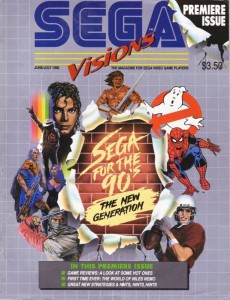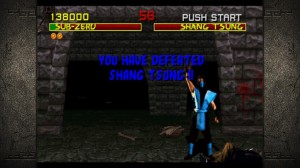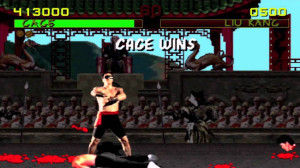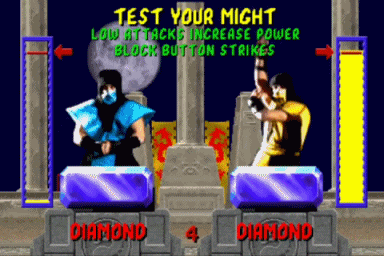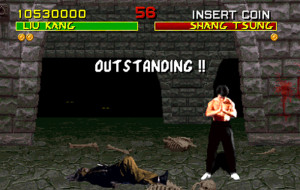Do you remember that day you received your first video game console? How about that time you discovered a secret stage that none of your friends knew about? Those days of being so excited for the latest iteration in a long-running series, only to be disappointed or have your expectations exceeded beyond your wildest dreams. That is what the Video Gamer’s Experience is all about. Now lets take a trip down this electronic memory lane.
By 1992, the Nintendo Entertainment System was practically dead in the water. New games were released rarely; and most of those games were terrible at best. Before the days of video game sale date information was at your fingertips via the internet, to become knowledgeable of console game releases (or consoles in general) the gamer had to exchange currency for a little thing called “video game magazines”. Yes, the once booming form of information helped gamers far and wide differentiate between the playable and unplayable. I, being only seven years old at the time, had no source of income other than my grandparents’ one-to-five dollar gift when visiting them. And even then, most of my money went to “X-Men” comic books when it came to reading material. So I was left ignorant about other gaming options.
Thankfully, a weekend at my aunt Cicero’s house would open my eyes to the future. After a particularly cool summer day (hilariously spent with my mom as we thawed Cicero’s freezer and literally had to chop a frozen turkey out of its icy tomb), I sat with Cicero’s future stepson, Reginald. Reggie, or “Boo” as we all affectionately called him, had the privilege of being one of those gamers who could find out what was going on in the video game world. In front of Reggie’s television sat an interesting black square. The golden, “16-Bit” logo gracing this square meant absolutely nothing to my uniformed mind. What did mean something was the blue ball blazing across the TV screen thanks to the 16-Bit-having square box made by some company called “Sega”. Wide-eyed and intrigued, I watched him play a game I would later know as “Sonic The Hedgehog”. The fast-paced platformer was the reason why I wanted the Sega console system, the “Genesis”. But the local bowling alley gave me the game that’d change my view of video gaming.
During a school field trip/reward for doing so well on our standardized tests, I found myself at the bowling alley, staring at this game machine/arcade cabinet almost demanding me to give it my money. I couldn’t resist, watching the screen flash to reemphasize the game’s title, “Mortal Kombat”. I only got a couple of fights in before I had no quarters left to give. What I thought would be my first and potentially last experience with this fighting game proved to be the beginning of a legacy in my personal gaming experience.
By Christmas of 1993, my parents got me the Sega Genesis I wanted for over a year. Sadly for me, the amount of money spent to complete my Christmas list put the rather expensive “Mortal Kombat” on the backburner (especially since the Genesis came with “Sonic the Hedgehog 2” so it wasn’t necessary for me to have another game). But my dad refused to let his son be disappointed about not playing the game he wanted. So if he couldn’t buy the game, my dad figured renting would be the next best thing. He was right.
Did I Complete “Mortal Kombat”?
Though I was playing this version of “Mortal Kombat” on a console for the first time, it felt like it had only been a day or two since I played the game initially. With my dad by my side, I experienced the true joy of what it means to play fighting games: multiplayer interaction. For the first couple of hours on that snowy morning, my dad and I exchanged wins and losses. Since this was, obviously, long before the days where bundles of video game information was easily found throughout the internet, the only way a person could know about, let alone how to do, the infamous post-fight fatalities was through person-to-person interaction; or in my case, have someone nice enough to write down every button combination in the rental’s instruction manual that would allow you to either rip someone’s heart out or uppercut them into a pit of nails.
The problem with “completing” a fighting game is completion comes with a personal goal. For some, beating “Mortal Kombat” meant completing the single-player Challenge Tower where the player would take one character and fight every other character in the game (plus some handicap fights for good measure) including unplayable bosses – the four-armed, half-dragon beast Goro and a shape-shifting sorcerer named Shang Tsung. For others, “completion” meant learning all of the special moves, fatalities, and spilling more blood than a “Friday the 13th” movie. And then there were some who conveniently had enough friends or were around arcade machines and random people waiting to be slaughtered by your attacks.
I enjoyed a little bit of everything mentioned above, but nothing mattered more to me than finally seeing Shang Tsung burn up. After multiple rentals and talking with my friend whose brother survived the onslaught of Goro and Tsung thanks to various jump kicks, I too saw that glorious moment where the game proudly tells you, “You have defeated Shang Tsung!”
Did “Mortal Kombat” Live Up to the Hype?
The original “Mortal Kombat’s” strength didn’t rely on deep, extensive game play, but sheer, digitized brutality. Unlike the rather cartoony “Street Fighter II”, “Mortal Kombat” featured real people digitized and scaled down for bloody battle. This resulted in parental groups going crazy over the depiction of real people being murdered for children to see. While the argument over video game violence affecting children (and people of all ages in general) the truth is “Mortal Kombat” on the Sega Genesis was downright brutal. For Super Nintendo adopters, they found their game lacking in what made “Mortal Kombat” stand out in the fighting game genre – blood and guts. The uncensored violence on the Genesis version made players ignore some of the game’s biggest flaws.
While the “Street Fighter II” featured game play easy enough for anyone to pick up & play, but relatively tough to master, “Mortal Kombat’s” game play and subsequent strategies became almost too predictable after a while. The most experienced “Kombat” players could and probably would be considered “spammers” by utilizing defensive techniques to force an opponent to jump their way across the screen, into a well-timed, unblockable uppercut. Leg sweeps made Scorpion’s spear useless and Sub-Zero’s freezing would leave an opponent paralyzed for a short period of time. And don’t get trapped in the left or right corners of the screen against a Johnny Cage player.
But violence and cheap tactics wasn’t all there was to the first game. “Mortal Kombat” featured mini-games between certain battles that made the player tap the life out of their controller. Test Your Might became the hand exerciser’s dream as he/she would have to go from lightly hitting their buttons to almost assaulting the controller. Like any great game, “Mortal Kombat” featured a hidden character you could fight as well.
Yet, with all of its flaws, it never turned me (and other gamers) off to the game because the simplicity and unyielding violence is what made the original game and future iterations so much fun.
Should You Play “Mortal Kombat”?
As you’d expect from the first in a long-running series, “Mortal Kombat” was drastically improved upon two years after the first game was released. “Mortal Kombat II” featured stronger, tighter game play, more characters, better graphics, and even crazier post-fight shenanigans. The most recent edition (released in 2011) harkened back to the days of old while providing lush three-dimensional graphics; setting the bar high for any future “Mortal Kombat” installments (including the recently announced “Mortal Kombat X”). If you want to see where and how the series began, then go ahead and test your might. Just don’t expect “Mortal Kombat” to impress you like it did many gamers in the early 1990s.


